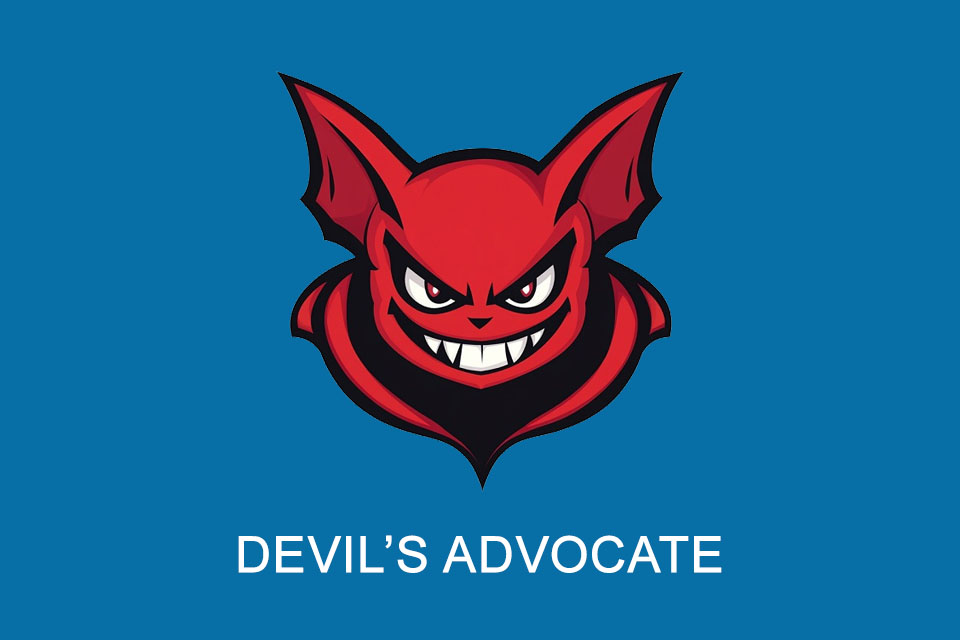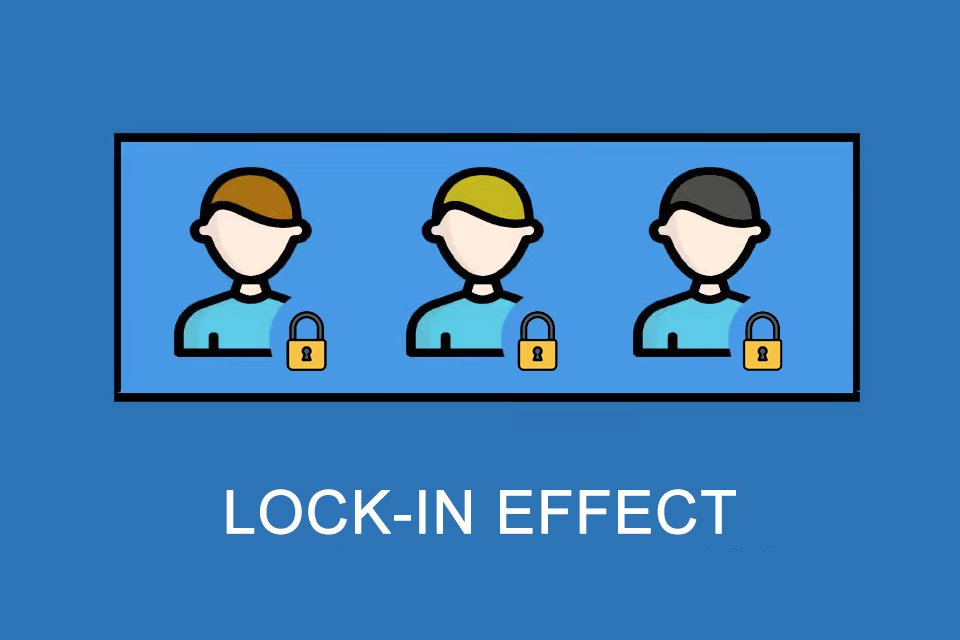What is the Devil’s Advocate?
Devil’s advocate: speaking up with good intentions
A project team is working enthusiastically on a new undertaking. The mood is motivated, everyone is pulling in the same direction, the idea seems coherent – almost too good to question. There is no criticism, not because there is nothing to criticise, but because no one dares to disturb the general euphoria. What no one has noticed is that a key aspect of the planning has been overlooked. It is only much later that it becomes clear that a critical view from the outside – or rather, from the inside – was missing.
‘Advocatus Diaboli’ is Latin and literally means ‘devil’s advocate’. The term originated in the canonical process of the Catholic Church, where the devil’s advocate was responsible for presenting arguments against a canonisation in order to thoroughly examine the candidate. [1] Today, the term is used to describe a person who deliberately takes a contrary position – not out of a spirit of contradiction, but with a constructive intention. The Advocatus Diaboli asks uncomfortable questions and brings up different perspectives, thus helping to make decisions more robust and well thought out. His role is uncomfortable – and often precisely for that reason irreplaceable.
Reasons for a devil’s advocate
In teams, projects and organisations, great importance is often attached to harmony, efficiency and consensus. This seems positive at first – after all, good cooperation and quick decisions promote motivation and progress. But this dynamic can be deceptive: if critical voices are missing because they are perceived as disruptive or because no one dares to express concerns, dangerous blind spots arise. In such situations, the importance of the devil’s advocate becomes particularly clear.
A common phenomenon, for example, is groupthink or group thinking. Here, team members submit to a dominant opinion or a quick consensus without expressing their own doubts. The desire for unity overrides the need for thoroughness – and so risks are overlooked, objections suppressed and alternatives not seriously considered.
The abilene paradox can also lead to serious mistakes. In this case, a group acts contrary to the actual convictions of its members because everyone wrongly assumes that ‘the others’ support the decision. Criticism is not voiced out of conviction, but out of consideration – and the error grows into collective reality.
Another phenomenon, particularly prevalent in hierarchically structured organisations, is the HIPPO effect – named after the ‘Highest Paid Person’s Opinion’. The opinion of the highest-ranking or best-paid person carries disproportionate weight, regardless of its technical basis. Team members often unconsciously adapt their views to the authority or withhold their objections out of respect, insecurity or tactical reasons. This can lead to dangerous narrow-mindedness in thinking.
These phenomena have one thing in common: there is a lack of space for critical reflection. It is precisely this space that the devil’s advocate creates. He interrupts the collective nodding, asks the uncomfortable questions and thus prioritises the quality of a decision over the speed of its implementation. It is not about fundamental disagreement, but about targeted questioning – with constructive intent. This perspective can be uncomfortable – but often prevents exactly what will later prove costly: collective self-deception.
Tips for the devil’s advocate
The Advocatus Diaboli is not a person who constantly has to counter – but a role that is consciously taken or assigned. To be effective, it needs an environment in which criticism is allowed and desired. This can be in strategic planning, product development, project management, requirements engineering, recruiting, marketing or sales. Wherever decisions are made, it helps to question assumptions and uncover blind spots.
Here are some tips for the practical use of devil’s advocate:
- For the advocatus diaboli to be effective, it is not enough to simply name him formally. It is crucial that the culture in which he operates not only tolerates contradiction, but also recognises it as a valuable contribution. If you really want to create space for counter-arguments, you have to start deeper – with routines, role models and thought patterns.
- In many teams, criticism is implicitly equated with an attack on progress: anyone who puts the brakes on is a troublemaker. To counteract this, it helps to frame criticism as part of the progress. For example, with rituals such as a ‘joy of error’ session, in which people deliberately look for stumbling blocks in their thinking – not to slow them down, but to pick up speed without losing their way.
- Instead of appointing one person as devil’s advocate, the whole team can take it in turns: sometimes everyone consciously adopts a sceptical perspective, sometimes they argue against their own convictions. This change of perspective loosens entrenched opinions and lowers the inhibition threshold for expressing uncomfortable ideas.
- One common reason for remaining silent is that everyone believes they are alone in their opinion. Tools such as anonymous mood building (‘thumbs up/medium/down’), digital surveys or written requests for initial reactions (e.g. on moderation cards) can help to make tensions visible – before they disguise themselves in consent.
- Managers or experienced team members who openly and respectfully disagree send an important signal. Presenting criticism with humour, curiosity and respect shows that you can disagree without poisoning the atmosphere. And those who respond gratefully to criticism are also giving permission to contribute ideas.
- If everyone agrees, this is not a sign of clarity, but often a warning signal. Good moderators listen to the silence: ‘What’s wrong with this idea?’ or ‘What perspective is still missing here?’ In this way, consensus is not treated as a goal, but as a test bench.
- In the heat of the moment, it can be difficult to objectively examine the opposing position. That’s why it’s worth structuring decisions in two phases: first collect, then question. In the second phase, there is an explicit invitation to speak out against the idea – without time pressure and without loss of face.
Playing the devil’s advocate is not a clichéd role, but a thinking tool that can be used flexibly and is highly effective. Those who manage to integrate this attitude into their daily work not only protect themselves from making the wrong decisions, but also foster a team climate in which real quality is created through friction, reflection and respect.
Impulse to discuss
In many organisations, there are people who consistently think critically, ask uncomfortable questions and do not immediately fall into line with the general consensus. They see risks where others see opportunities – and speak out when others only think about it. However, instead of being seen as valuable sources of inspiration, they are often perceived as troublemakers, sceptics or disruptors.
Why is it so difficult to see critical thinking as a contribution rather than as resistance? And what does this say about the culture in the company?
Notes (the links are in German):
[1] Encyclopaedia of Theology and Church: In the original, narrower sense, the devil’s advocate refers to a church lawyer whose job it was to critically question the evidence and arguments presented in the context of a canonisation procedure or to put forward negative counter-arguments of his own. His counterpart, who advocated canonisation, was traditionally the so-called devil’s advocate – the ‘advocate of God’.
It is also referred to as the devil’s advocate method because it is not just a role, but a conscious thinking and conversation technique. The method promotes critical thinking, systematically and constructively.
Here you will find a German-language video about the devil’s advocate.
If you like the article or would like to discuss it, please feel free to share it in your network. And if you have any comments, please do not hesitate to send us a message.
Here you can find additional information from our Smartpedia section:



